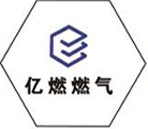
Nov . 24, 2024 18:48
Back to list
Efficient Dust Collection with Cyclone Separator Technology for Industrial Applications
Understanding Cyclone Separators Principles and Applications
Cyclone separators, also known as cyclone dust collectors or cyclone filters, are essential devices in industrial processes where the separation of particulate matter from gases or liquids is required. Their design and operational principles allow for efficient removal of unwanted particles, making them invaluable in various sectors, including manufacturing, chemical processing, and even environmental management.
Principles of Operation
Cyclone separators operate on the principle of centrifugal force. When a mixture of gas and particles enters the cyclone, it is directed into a cylindrical chamber through an inlet that creates a swirling motion. This motion generates a centrifugal force that pushes heavier particles toward the outer wall of the cyclone. As the gas continues to swirl, the lighter components, primarily the gas, flow upward and exit through a separate outlet, while the heavier particles are forced downwards into a collection hopper.
The efficiency of a cyclone separator is influenced by several factors, including its design, size, flow rate, and the characteristics of the particles being separated. Typically constructed from durable materials to withstand high temperatures and abrasive particles, cyclone separators can handle a wide range of industrial applications. Their simplicity and low maintenance requirements further contribute to their popularity.
Design Features
The design of a cyclone separator can vary significantly based on its intended application. Key design features include inlet geometry, cone angles, and the dimensions of the separating chamber. For example, a wider inlet may allow for a greater volume of gas, while a narrower inlet can increase the speed of the incoming mixture, enhancing separation. Cone angles can also be optimized to maximize the centrifugal force acting on the particles.
Moreover, the height and diameter of the cyclone separator are critical for its operational efficiency. A taller cyclone typically provides better separation efficiency for finer particles, while a shorter one may be more suitable for larger particles.
Applications of Cyclone Separators
cyclone separator

Cyclone separators find applications in various industries due to their effectiveness and adaptability
. Some prominent uses include1. Dust Collection In industries where dust generation is prevalent, such as woodworking, metal processing, and pharmaceuticals, cyclone separators are used to capture airborne particles, preventing them from contaminating the workplace environment and protecting the health of workers.
2. Coal and Mineral Processing In the mining industry, cyclone separators are employed to separate coal or minerals from waste material. By using their separating capabilities, operators can enhance the efficiency of resource recovery.
3. Oil and Gas Industry Cyclone separators are crucial in separating liquids from gases and removing particulates from natural gas streams, thereby ensuring that downstream processes work efficiently.
4. Wastewater Treatment In wastewater treatment facilities, cyclones can aid in separating solids from liquid effluents, helping to improve the quality of processed water before discharge or reuse.
5. Food and Beverage Processing Cyclones are used to reduce dust and separate unwanted particles from powdered materials, ensuring product quality and compliance with food safety standards.
Advantages of Cyclone Separators
One of the main advantages of cyclone separators is their low operational cost compared to other separation systems. They have no moving parts, which minimizes maintenance needs and downtime. Cyclone separators are also capable of handling large volumes of gas or liquid with relatively low energy consumption. Additionally, they offer flexibility in design, allowing for customization based on specific requirements.
In conclusion, cyclone separators are a crucial technology in many industrial applications, providing efficient and cost-effective solutions for particle separation. Understanding their operational principles, design features, and application areas is essential for optimizing processes across various industries. As industries continue to seek sustainable and efficient means of operation, the role of cyclone separators will likely grow, helping to minimize waste and enhance productivity.
Next:
Latest news
-
Safety Valve Spring-Loaded Design Overpressure ProtectionNewsJul.25,2025
-
Precision Voltage Regulator AC5 Accuracy Grade PerformanceNewsJul.25,2025
-
Natural Gas Pressure Regulating Skid Industrial Pipeline ApplicationsNewsJul.25,2025
-
Natural Gas Filter Stainless Steel Mesh Element DesignNewsJul.25,2025
-
Gas Pressure Regulator Valve Direct-Acting Spring-Loaded DesignNewsJul.25,2025
-
Decompression Equipment Multi-Stage Heat Exchange System DesignNewsJul.25,2025

